Rachel Whitney
Curator, Sapulpa Historical Museum
This week in history, in 1946, the fear and effects of Polio reached Creek County. Pools closed for the summer, A Boy Scout trip was canceled, the School Board pushed the opening of the new school year back, and a child died all in the same month.
The shortened name of Poliomyelitis, Polio is an infectious disease that can cause muscle weakness, stiffness, and even numbness. The disease also causes lung damage and respiratory restrictions. It could last weeks to years, and in some cases cause death.
Polio would spread through contaminated food and water. This was one of the reasons why Sapulpa swimming pools began to close early the summer of 1946.
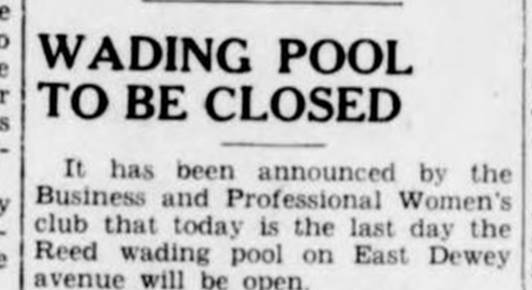
Back on June 20th, 1946, the Reed Wading Pool held a grand opening on E Dewey. The pool closed for the summer by August 3rd, 1946. “The pool will be closed for a short while due to the absence of participants. Attendance at the pool has been dropping off considerably for some time.” It was thought that parents were keeping their children away from the pool due to the fear of Polio.
“There have been no cases of the disease reported in Creek County.” Dr. Philip Joseph, Creek County Health Director, reported a week later that the County was still in the clear. He stated that children are more prone to the disease, and many adults could be carrying the germs.
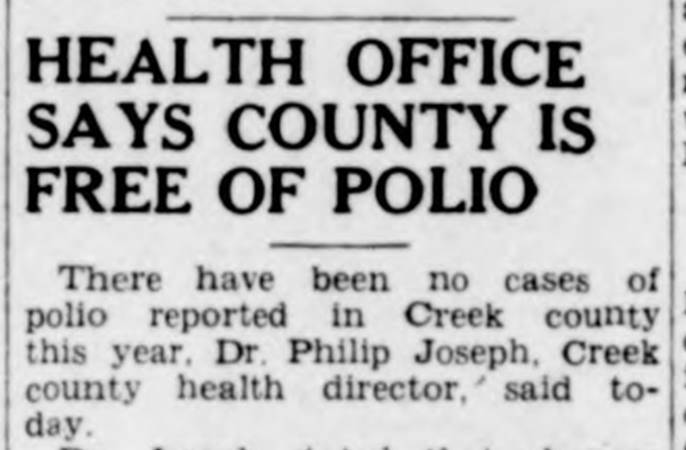
Therefore, the annual summer Boy Scout trip was canceled as a precaution.
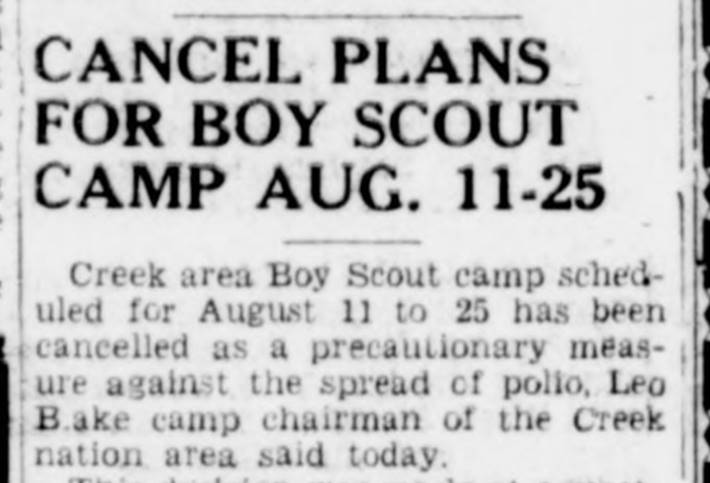
On August 16th, it was announced that the funds from the Polio Drive were used to purchase new wheelchairs. Nine chairs were purchased, in total, “to be used by persons afflicted with Polio or others who need those conveniences.” Three chairs came to Sapulpa, two in Drumright, one in Oilton, and one in Mannford*.
*Note: the other two chairs were not listed in the article.

It was also announced that there have been five cases reported of Polio in Creek County. At least two in Drumright, one in Bristow, and the others in Sapulpa were announced as either just fallen ill or critical.
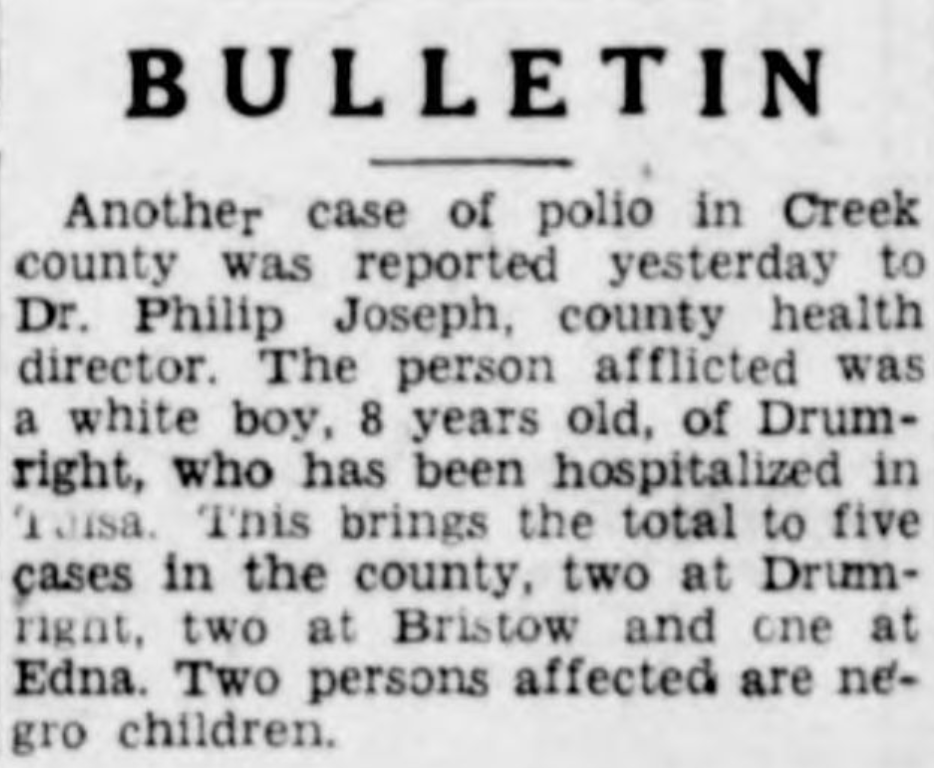
Four days later, on August 20, it was announced, “the Polio Ward at the hospital, to which a portion of the Creek County Infantile Paralysis Fund is contributed, has 18 cases in isolation at present, including a few adults.*”
*Note: This report is for both Creek County and Tulsa County, too.
Not every swimming pool organization had been closed for the summer, unfortunately. A young six-year-old contracted the disease while visiting a swimming hole in Sapulpa.
Dr. Joseph stated the child could be placed in an isolation ward “where he will remain for a period of at least 21 days.” Dr. Joseph also cautioned that it is not a time of panic, but to be safe by avoiding crowds and having a good, clean diet.”
The City Official realized the need to close the city pools. On August 21, the city started a clean-up campaign. “City Officials went into action to do everything possible to combat Polio following another confirmation.” A stricter guidelines of cleanliness was provided. “A push to keep alleys clean…check sanitary conditions by placing lids on trash cans regularly, and keep the garbage pickup system active.”
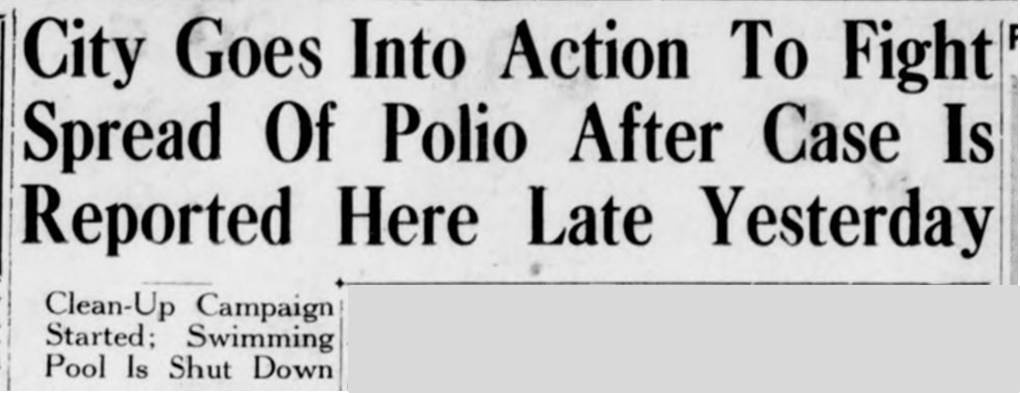
On August 24, it was announced that Sapulpa schools would proceed as usual. “At the present time, we are going ahead with plans for opening of school at the regular time [September 3, 1946].” And it was deemed if necessary the school opening would be postponed.
The parents of the young boy with Polio said he was moved to a Tulsa hospital. “While his condition is still considered serious, his temperature went down and he was alert to his surroundings, giving encouragement for continued improvement. His condition, however, is expected to vary some from day-to-day.”
On August 29, it was announced schools would be delayed a week. The day before, schools in Muskogee announced their delayed openings, and Sapulpa followed. Sapulpa had received “vigorous protests against the opening of schools during the current Polio scare.” School would begin on September 9 for the 1946-1947 school year.
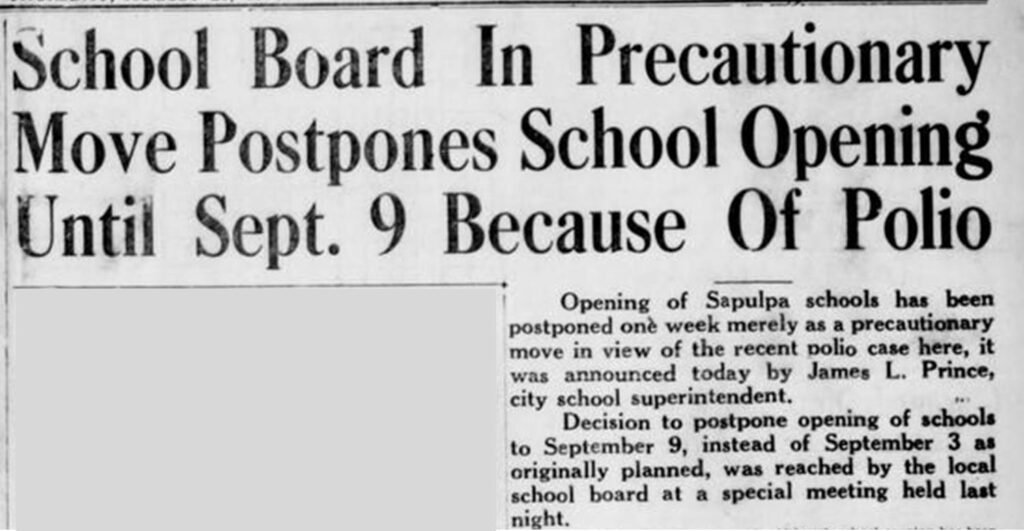
On August 30, 1946, the young six-and-a-half-year-old passed away.
“He was the sixth child in the County to contract the dread disease. Although his condition has remained serious, he was reported to have improved last week, when he was able to swallow following relaxation of the throat muscles which had been paralyzed. His condition suddenly declined when he developed a relapse of the swallowing muscles.”
The 20th Century began with a Polio epidemic in the United States and parts of Europe. According to Wikipedia and the CDC, this Polio outbreak lasted nearly five decades. “By 1950, the peak age incidence of paralytic poliomyelitis had shifted from infants to children aged five to nine years, when the risk of paralysis is greater; about one-third of the cases were reported in persons over 15 years of age.”
In the late 1940s and early 1950s, Iron Lungs were produced to help with the infectious disease to aid with breathing. Many hospitals began establishing new centers just for the care of the patients. Soon, a vaccine was being tested, produced, and shared. In 1948 and 1953, medical researchers tested the vaccine on themselves and their families. In 1954 and 1955, the vaccine was tested on schoolchildren and began to circulate around the United States.










